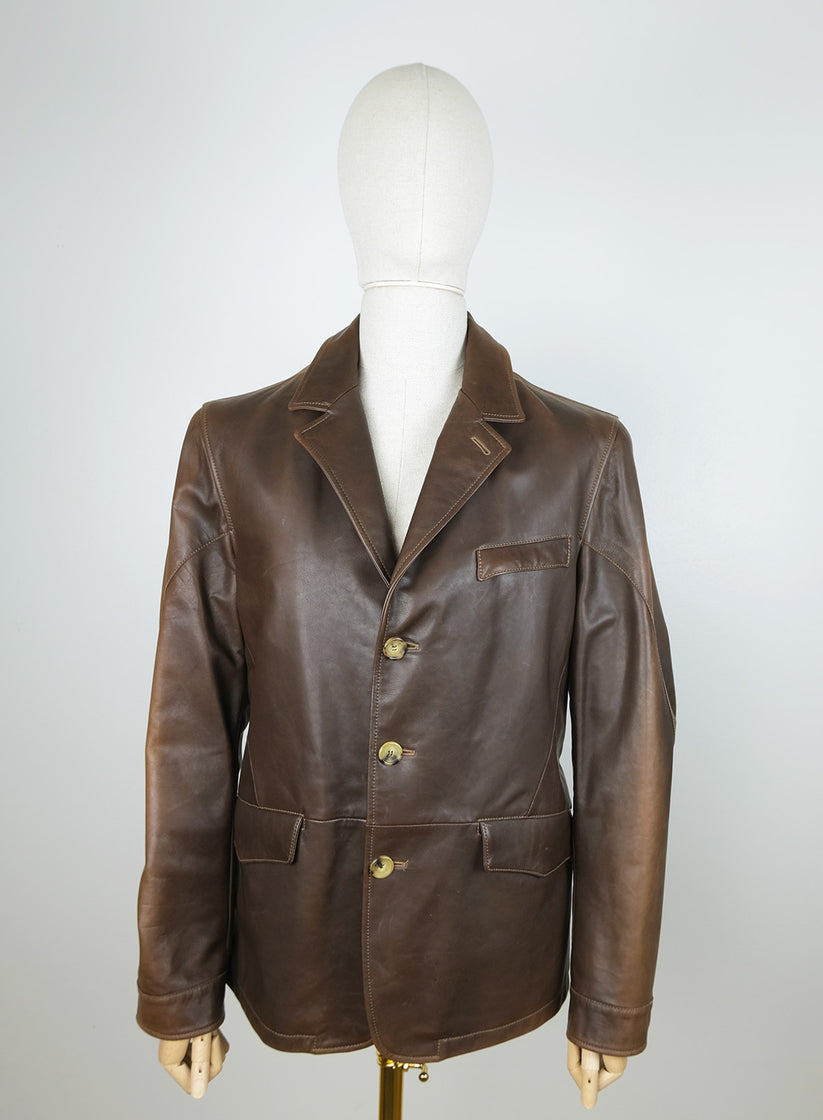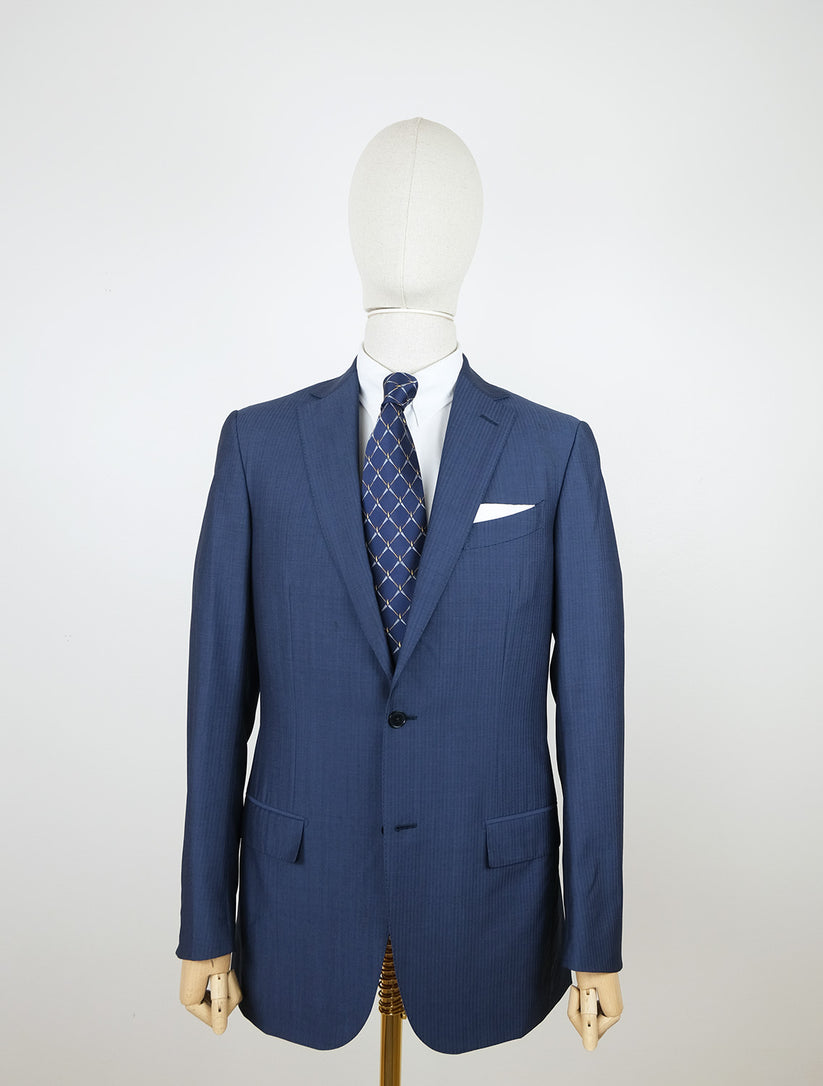Kirje nuorelle dandylle, osa II
0August 9, 2011 by Ville Raivio
Michael Mattis päättää kirjoitelmansa toisella osalla, jossa käsitellään sopivia vaatekappaleita, käytöstapoja, kirjasivistystä sekä toisten huomioimista.
Michael Mattis
Letter to a Young Dandy, Part II
“My Dear Palmieri:
I am so glad to hear that your classmates and teachers consider you well dressed. It means that you have realized the first step in your dandiacal aspirations. If a dandy can be said to have any responsibilities, the first is to always be well dressed. The second is to be daring within the fluid limits of accepted taste. We will get to that in a moment. When last I wrote, we discussed the dandy in theory: what dandyism is and is not, the difference between the dandy and the various forms of aesthete and so forth. We determined that dandyism is, in short, the study and practice of personal elegance. Today we will explore dandyism in practice.
We left off last time with the question “What shall I wear?”
To that I can only answer, “Why, anything you like, provided it is within the bounds of good taste, is appropriate to the occasion, and falls, as Max Beerbohm wrote, ‘within the wide limits of fashion’.” Many have trouble with the “F” word, confusing overall fashionableness with vulgar trendiness. It should be remembered that, during his heyday as a theater critic and essayist in London, Beerbohm wore the elegant top hat and frock coat that were the man-about-town fashions of the Edwardian era. But half a century later, during his semiretirement in Italy, his visitors found him attired, albeit impeccably, in a simple suit, or casually in an ascot and cardigan – the everyday fashions of Europe in the 1950s. “The dandy,” he once wrote, is “the ‘child of his age,’ and his best work must accord with the age’s natural influence.” And bear in mind what Edward Bulwer-Lytton once wrote, “Never in your dress altogether desert that taste which is general. The world considers eccentricity in great things, genius; in small things, folly.”
It is a common misconception that one must wear a suit and tie every day, or even a sports jacket and tie, to be considered a dandy. In fact, one of the contemporary dandy’s greatest challenges lies in making casual dress fresh and daring. A fine pair of cords, a warm alpine sweater, silk scarf and a wool cap worn at a rakish angle are as dandyish as a bespoke suit if worn in, say, an Aspen ski chalet. In class, a burgundy velvet blazer and fitted black turtleneck can look as smart today as they did half a century ago. Look to your university’s rich heritage for insight into casual campus attire. Somewhere among UPenn’s moldering piles of stone you will find a long hall chock full with class portraits, sporting photos, trophies and other memorabilia. Observe carefully the styles of your venerable alumni and snatch from them the classics that will work for you today and give you panache tomorrow. And always remember that what you wear is less important than the style with which you wear it, for this is what separates the true dandy from the mere dandyologist.
There are many shops, department and warehouse stores that offer perfectly decent, classic apparel at affordable prices that you will be able to make work for you if you are patient, methodical, informed and inspired. Be sure to keep an eye on the so-called outlet shops, such as Polo and Brooks Brothers. There is also second hand and vintage. There’s no shame in buying second hand, if what you find works for you better than a new item would. I have found some of my best hats, for example, in antique shops. While some vintage shops are worth looking into for hard-to-find accessories and the occasional jacket or vest, steer clear of buying whole ensembles from days past.There’s nothing dandyish about looking like a gangster from a Jimmy Cagney movie, much less like Herb Tarleck in “WKRP in Cincinnati.” While we sometimes take our inspiration from history, we never copy it. A better bet is high-end consignment shops that serve tony charities like the ballet, the opera and the local upper-crust hospital. Rich people not only tend to have nicer clothes, but they cast them off more frequently than ordinary folk. And there is always, of course, eBay.
Before we step out to the shops it’s important to do some preparation. We can’t build a basilica merely by piling one stone on top of another. We need a solid foundation. It doesn’t matter if you are small, tall, slender or stout. You are an aspiring dandy, not an aspiring runway model, after all. But it’s vital to have a sound architecture upon which to build. To quote Beerbohm once again, “True dandyism is the result of an artistic temperament working upon a fine body.” There are many activities that can be useful in helping one build a solid framework. Fencing, dance, tennis, badminton and squash are excellent pastimes that can build strength, promote good posture and bring the bloom of good health into your pallid cheeks without putting you in a cast or depleting the stock of cash you should be spending on clothes.
I meant books, of course.
The temptations and pressures of a modern American university are myriad. Chief and most dangerous are the twin desires to both fit in and yet to stand out. You will face enormous pressure to play a part in a clique. At the same time you will feel compelled to make your mark. The easiest and most seductive of path is ill-conceived outrageousness. Instead of wearing peacock feathers and black lipstick, or strutting around campus with a boa constrictor around your neck, or reading “Howl” through a bullhorn from the top floor of the library, set yourself apart by the simple elegance of your dress, the confidence of your carriage and the unaffected grace of your deportment. At the same time, cultivate a wide acquaintance with your studied wit, your easy courtesy, and, moreover, your readiness to laugh.
Frequent interaction among a highly diverse acquaintance can be a great source of pleasure. It is also to be encouraged as means of instilling in oneself a sense of the foibles that move human behavior, which, as we noted in our last correspondence, is an essential quality of dandyism. But as with fashion, there is a difference between moving in society and becoming servile to its folly.
Always remember: to be a dandy is to be in control of who you are. In the words of Ellen Moers, the author of the quintessential history “The Dandy,” “The dandy’s achievement is simply to be himself. In his terms, however, this phrase does not mean to relax, to sprawl, or… to unbutton; it means to tighten, to control, to attain perfection in all the accessories of life, to resist whatever may be suitable for the vulgar but improper for the dandy.”
Should someone note, in a negative way, your attention to detail with regard to your dress and deportment, don’t bother to be angry, for in anger you lose yourself. Naturally, some people will always resent the smart and the stylish. Never mind them; cultivate that antique calm which will allow you to observe things and respond to them carefully with a critical eye and a sense of detachment. Says Machiavelli, “The world belongs to the cool of head.” Lastly, Never be afraid to appear judgmental: If you perceive a thing to be trendy crap, say so – and as amusingly as you can.
Naturally I wouldn’t for a moment suggest that you should never make close friends, go to a hip-hop show, fall in love, hold forth in the campus coffee house, get tipsy at a party or dance at a nightclub with your chums until 3 o’clock in the morning. On the contrary, you need to experience all that life has to offer. But Beau Brummell, according to his early theorist, Jules Barbey D’Aurevilly, always applied this rule of thumb: “In society, stop until you have made your impression, then leave.” In other words, Brummell would “look in,” as the expression went, at ball or a party or a card game just long enough so that the other guests might take note and remember him. During these short appearances he would use his ready wit and charm to make his impression. Indeed, had Brummell continued to follow this simple rule, his distinguished career would have lasted far longer, for it was staying too long, drinking too much and playing for stakes too high that proved to be his undoing.
To this maxim I can only add that the best way to know when you have made your impression – and thus when to leave – is at the moment when you are having the best time yourself. If you always depart on a high note, people will remember you warmly and always want more of you, just as you will enjoy the memory of your time with them.
I would be a liar, my dear Palmieri, if I told you that I have heeded all of the advice I have offered you. But had I the chance to do my university days over, I hope that I would. Dandyism is not for the weak of character: It requires too much self-mastery to be easy. (And the hardest part, my friend, lies in making it look easy.) But it is also filled with pleasures. Some are simple and sensual: the luxurious feel of a fine velvet jacket at holiday time, or the disciplined snap of linen trouser cuffs as they swing around your ankles during a springtime stroll. Others are emotional and cerebral, like the satisfaction of knowing you are impeccably turned out, and that in order to be so required measures of education, creativity, self-knowledge and control that few others aspire to possess.
In you, Palmieri, I have great confidence.”
Category Dandyismi, Vieraskynä | Tags:





Leave a Reply